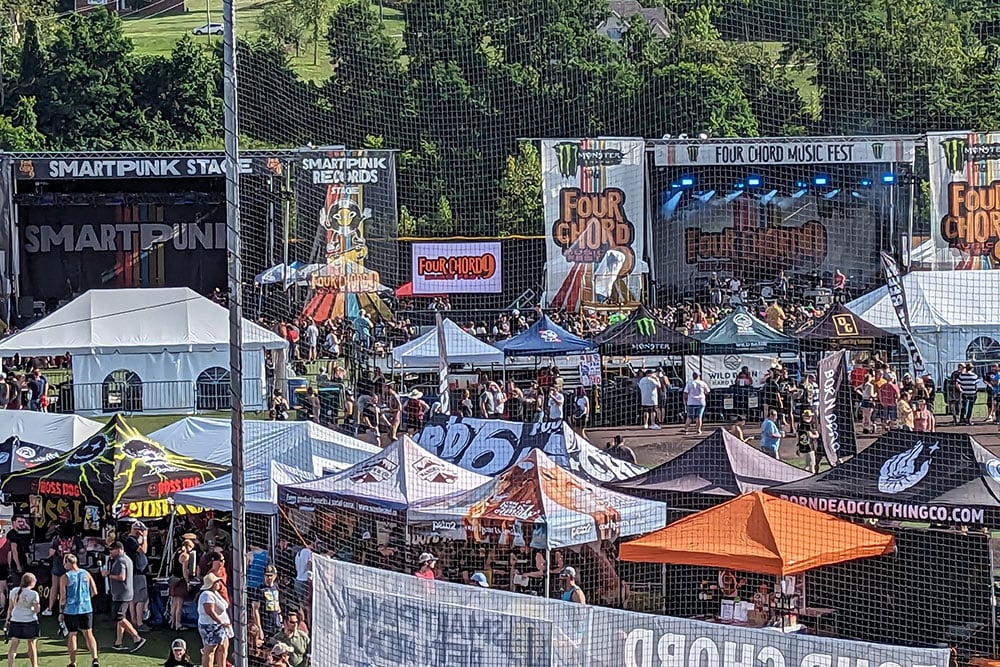Collier’s Weekly: Won’t You Be My Neighbor — On the Front Porch?
How a neighborly breakfast at Ka-Fair Coffee in Morningside demonstrates the need for neighborly proximity.
The other day, I was having breakfast outside of Ka-Fair Coffee in Morningside, and I was talking to a stranger about their corgi.
The corgi was happily in the middle of a walk, smiling with a lolling tongue as I chatted with its owner about how dogs respond to hot days. I was happily in the middle of the Ka-Fair Toast plate — one piece of bread layered in grilled chicken and tangy sauce like an open-faced panini, the other coated in butter and jam, served with a side salad — and pleased to be on a corner in an active neighborhood, chatting with whoever cared to stop.
I didn’t even mind the one guy who surveyed my plate and joked, “Looks like someone’s hungry!” That’s a statement without a ready response; in a worse mood, I might’ve bristled at it. But it was too nice of a day — and too positive an environment.
Ka-Fair is a lovely place, and Morningside is a lovely neighborhood. But as I watched the corgi continue on its journey, I thought about how this chance meeting was made possible by layout.
The outdoor seating at Ka-Fair isn’t in a courtyard to the side of the business or in a fenced-off area behind it, the way many beer gardens are arranged. (Nor does it feature those odd, vinyl mini-tents that popped up during the pandemic and are yet to vanish fully.) The seating is simply on the street — an active, neighborhood street — with just enough room for a few people to dine while others stroll by.
Even more important, here, is the fact that this coffee shop is nestled within a mostly residential neighborhood. Contrary to some opinions, this is very good for urban neighborhoods; while some grumble at any business existing within sight of their front door, the non-hermited among us know that it’s nice to have places to go very close to where we live.
In some Pittsburgh neighborhoods, you’ll still find corner bars or neighborhood convenience stores. That’s a good thing — and it should become easier, as the city works to modernize and update often antiquated zoning rules.
But there’s also a personal element needed to develop these sorts of neighborhoods and the spontaneous interactions they can facilitate: We need to start hanging out in front of our houses.
I’m always confused when I see people who treat their backyard as the sole outdoor space of their home, with the front of the house seemingly built for display only. I have a small backyard, and I like it; my tiny dog, Peanut, likes it quite a bit. But I’m much more fond of the small front porch on my house, which allows me to be outside while feeling connected to the street at large. I understand the desire for space; I don’t understand the desire to hide behind one’s house, never saying hello to the neighbors or greeting the mail carrier.
I’m reminded of a piece that Jennie Dorris and Patrick Doyle wrote for Pittsburgh Magazine a decade ago. Having just relocated to Pittsburgh for Boston, they were surprised to find that when they sat on their front porch, neighbors stopped by to chat; they made connections simply by existing in front of their house. Pittsburgh’s dense urban layout should make for friendly neighbors; that can only happen if we’re not hiding from them.
If this is the city of “Won’t You Be My Neighbor,” we should be present and neighborly whenever the mood — and, admittedly, the weather — allows. These are the neighborhoods we should create: interactive, lively and varied.
If you do it right, you can eat toast while meeting a corgi. That’s not likely to happen in the backyard.















